PJX Resources' Drilling Identifies Sedimentary Exhalative (Sedex) Mineralization
PJX Resources announces drilling results from its Dewdney Trail Property, revealing multiple mineralized sedimentary horizons and a mineralized vent breccia. The company completed sixteen holes totaling 5,100 metres, intersecting sixteen semi-massive to massive sulphide beds ranging from 3cm to 30cm in thickness. Two Sedex horizons were identified near the historical Estella mine, with thicknesses ranging from 8 to 12 metres. The drilling confirmed zinc mineralization in outcrop and discovered boulders with Sullivan-style mineralization at the base of the mountain slope. The geology and mineralization support potential for a significant Sedimentary Exhalative (Sedex) deposit.
PJX Resources annuncia i risultati di perforazione della sua Dewdney Trail Property, rivelando molteplici orizzonti sedimentari mineralizzati e una breccia ventilata mineralizzata. L'azienda ha completato sedici fori per un totale di 5.100 metri, intercettando sedici letti di solfuri semi-massivi a massivi con spessori che variano da 3 cm a 30 cm. Sono stati identificati due orizzonti Sedex vicino alla storica miniera di Estella, con spessori che variano da 8 a 12 metri. La perforazione ha confermato la mineralizzazione di zinco in affioramento e ha scoperto massi con mineralizzazione in stile Sullivan alla base del pendio montano. La geologia e la mineralizzazione supportano il potenziale per un significativo deposito Sedimentario Esalativo (Sedex).
PJX Resources anuncia los resultados de perforación de su Dewdney Trail Property, revelando múltiples horizontes sedimentarios mineralizados y una brecha ventral mineralizada. La compañía completó dieciséis pozos que suman 5,100 metros, intersectando diecisiete capas de sulfuro desde semi-masivas hasta masivas, con grosores que varían de 3 cm a 30 cm. Se identificaron dos horizontes Sedex cerca de la histórica mina Estella, con grosores que varían de 8 a 12 metros. La perforación confirmó la mineralización de zinc en afloramiento y descubrió bloques con mineralización al estilo Sullivan en la base de la ladera de la montaña. La geología y la mineralización respaldan el potencial para un depósito Sedimentario Exhalativo (Sedex) significativo.
PJX Resources는 Dewdney Trail Property의 시추 결과를 발표하며 여러 개의 광물화된 퇴적 수평선과 광물화된 환풍 브레치를 드러냈습니다. 이 회사는 총 5,100미터에 해당하는 16개의 구멍을 완료하였으며, 3cm에서 30cm 두께의 반 고체에서 고체 상태의 황화물 침대를 16개 교차하였습니다. 역사적인 에스텔라 광산 근처에서 두 개의 세덱스 수평선이 확인되었고, 두께는 8미터에서 12미터 사이입니다. 시추 과정에서는 노출된 곳에서 아연이 발견되었고, 산 기슭에 설리반 스타일의 광물화가 있는 바위를 발견했습니다. 지질학과 광물화는 상당한 퇴적 배출(Sedex) 매장지의 잠재력을 뒷받침합니다.
PJX Resources annonce les résultats de forage de sa Dewdney Trail Property, révélant de multiples horizons sédimentaires minéralisés et une brèche vent minéralisée. L'entreprise a réalisé seize trous totalisant 5 100 mètres, interceptant seize lits de sulfures semi-massifs à massifs d'une épaisseur de 3 cm à 30 cm. Deux horizons Sedex ont été identifiés près de l'ancienne mine d'Estella, avec une épaisseur allant de 8 à 12 mètres. Le forage a confirmé la minéralisation de zinc en affleurement et a découvert des blocs avec une minéralisation de style Sullivan à la base de la pente de la montagne. La géologie et la minéralisation soutiennent le potentiel d'un dépôt sédimentaire exhalatif (Sedex) significatif.
PJX Resources gibt die Bohrergebnisse seiner Dewdney Trail Property bekannt, die mehrere mineralisierte sedimentäre Horizonte und eine mineralisierte Vent-Brechung offenbaren. Das Unternehmen hat sechzehn Löcher mit insgesamt 5.100 Metern abgeschlossen und dabei sechzehn semi-massive bis massive Sulfbettungen mit Dicken von 3 cm bis 30 cm durchstoßen. In der Nähe der historischen Estella-Mine wurden zwei Sedex-Horizonte mit Dicken von 8 bis 12 Metern identifiziert. Die Bohrungen bestätigten die Mineralisierung von Zink im Aufschluss und entdeckten Blöcke mit Sullivan-artiger Mineralisierung am Fuße des Berghangs. Die Geologie und Mineralisierung unterstützen das Potenzial für ein bedeutendes Sedimentär-Exhalatives (Sedex) Vorkommen.
- Discovery of multiple mineralized sedimentary horizons and vent breccia indicating large mineralizing system
- Completion of 16 drill holes totaling 5,100 metres with multiple sulphide intersections
- Identification of two Sedex horizons with 8-12 metres thickness near historical Estella mine
- Surface samples showing high-grade mineralization (5.57% zinc, 0.94% lead, 4.41 g/t silver)
- 100% ownership of 680 km² of mineral claims in Sullivan Mining District
- Source of high-grade boulder mineralization not yet identified in drilling
- Higher elevation targets remain untested due to weather constraints
TORONTO, ON / ACCESSWIRE / November 12, 2024 / PJX Resources Inc. ("PJX" or the "Company") is pleased to announce that drilling at the Dewdney Trail Property has intersected multiple mineralized sedimentary horizons, a mineralized vent breccia/fragmental, and a chaotic fault scarp breccia with large blocks and fragments of sediments, some containing zinc mineralization. Geology and mineralization encountered during drilling and mapping supports a Sedimentary Exhalative (Sedex) environment with potential to host a deposit. The drill core continues to be logged and sampled. Sample results along with sections and maps will be released when analyses are received and compiled.
Dave Pighin, consultant and former Cominco geologist, commented, "What has been intersected is impressive as it indicates a large mineralizing system. Large systems support the potential to discover significant deposits. Drilling this part of the Dewdney Trail Property is similar to drilling across the Sullivan Sedimentary Basin on strike with the Sullivan Deposit."
Mineralized Sedimentary Beds/Horizons
Sixteen holes totaling 5100 metres were drilled over a period of 2.5 months until the middle of October. Sedex type mineralized beds or bands were intersected sporadically within about 500 metres of the stratigraphic column that was tested during this first phase of drilling. Sixteen semi-massive to massive sulphide beds, ranging in thickness from 3 cm to 30 cm, were encountered in the upper half of the stratigraphy. These sulphide beds are predominantly pyrrhotite/pyrite (iron sulphides). Some beds or bands contain minor visible sphalerite (zinc sulphide), galena (lead sulphide) and/or chalcopyrite (copper sulphide) (see photo A below).
Beneath the historical Estella mine, which is near the base of the 500 metres of the stratigraphic column tested, there appears to be 2 Sedex horizons where the frequency of sulphide beds and mineralization is greater and may represent a more robust mineralizing period during the formation of the sedimentary basin. These horizons appear to range in true thickness from 8 metres to 12 metres. The Sedex horizons are about 30.0 stratigraphic metres apart.
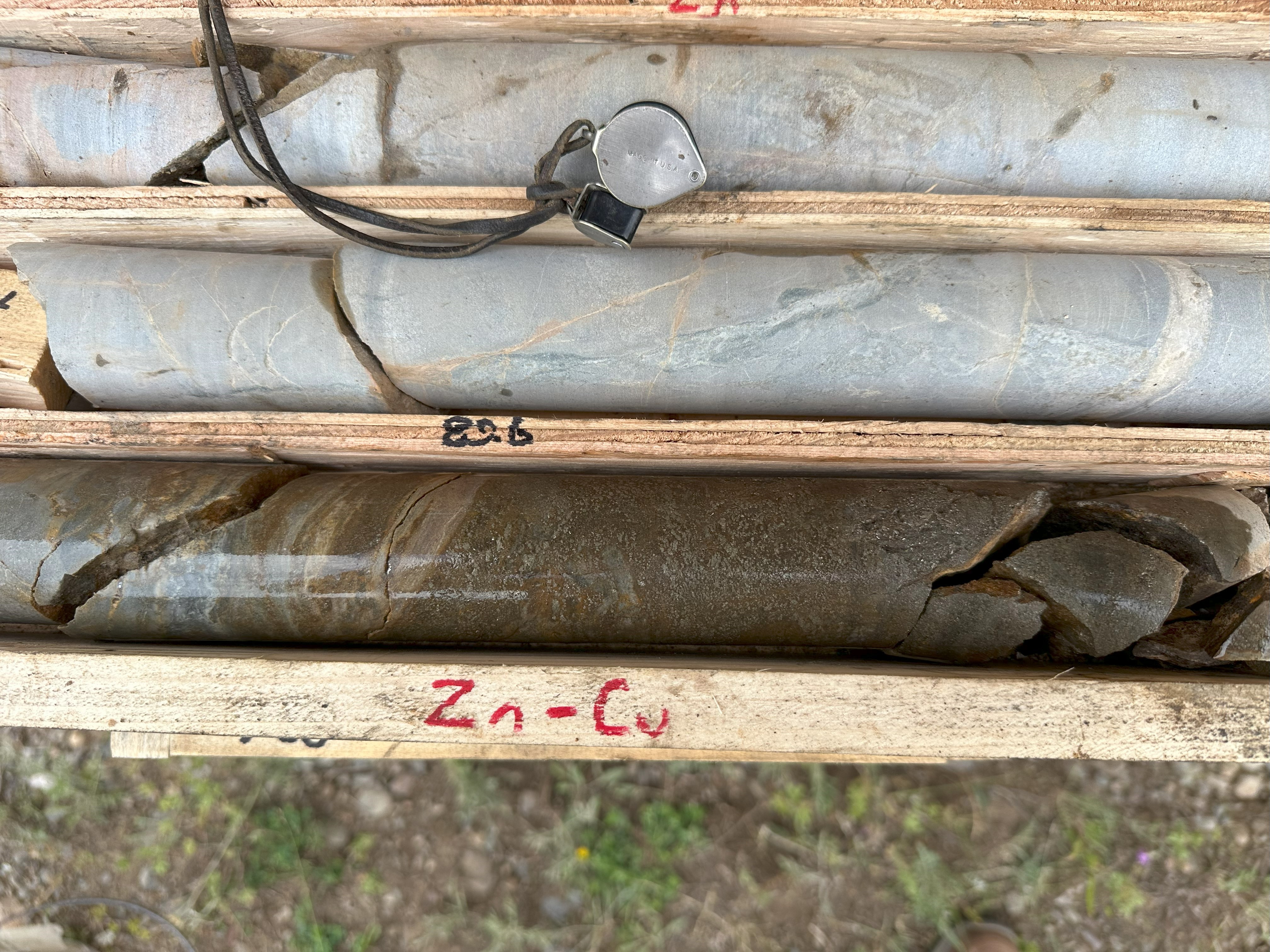
Mineralized Feeder Vent Breccia
Drilling supports the view that the mineralized breccia/fragmental first intersected and announced in a news release dated September 5th, 2024, is a possible discordant feeder vent estimated to be about 10 metres in true thickness. Vents are important in the formation of deposits as they provide a pathway for iron, copper, zinc and other sulphides to rise along and form Sedex style bedding conformable mineralization. The vent mineralization is predominantly iron sulphide (pyrrhotite and pyrite) that locally contains visible amounts of copper sulphide (chalcopyrite) and zinc sulphide (sphalerite), as well as fragments of iron sulphide mineralization (see photos B and C). These styles of mineralization support a venting environment where sulphide mineralization is exhaled on to an ocean floor or replaced sediment beds in the immediate stratigraphy below the ocean floor.
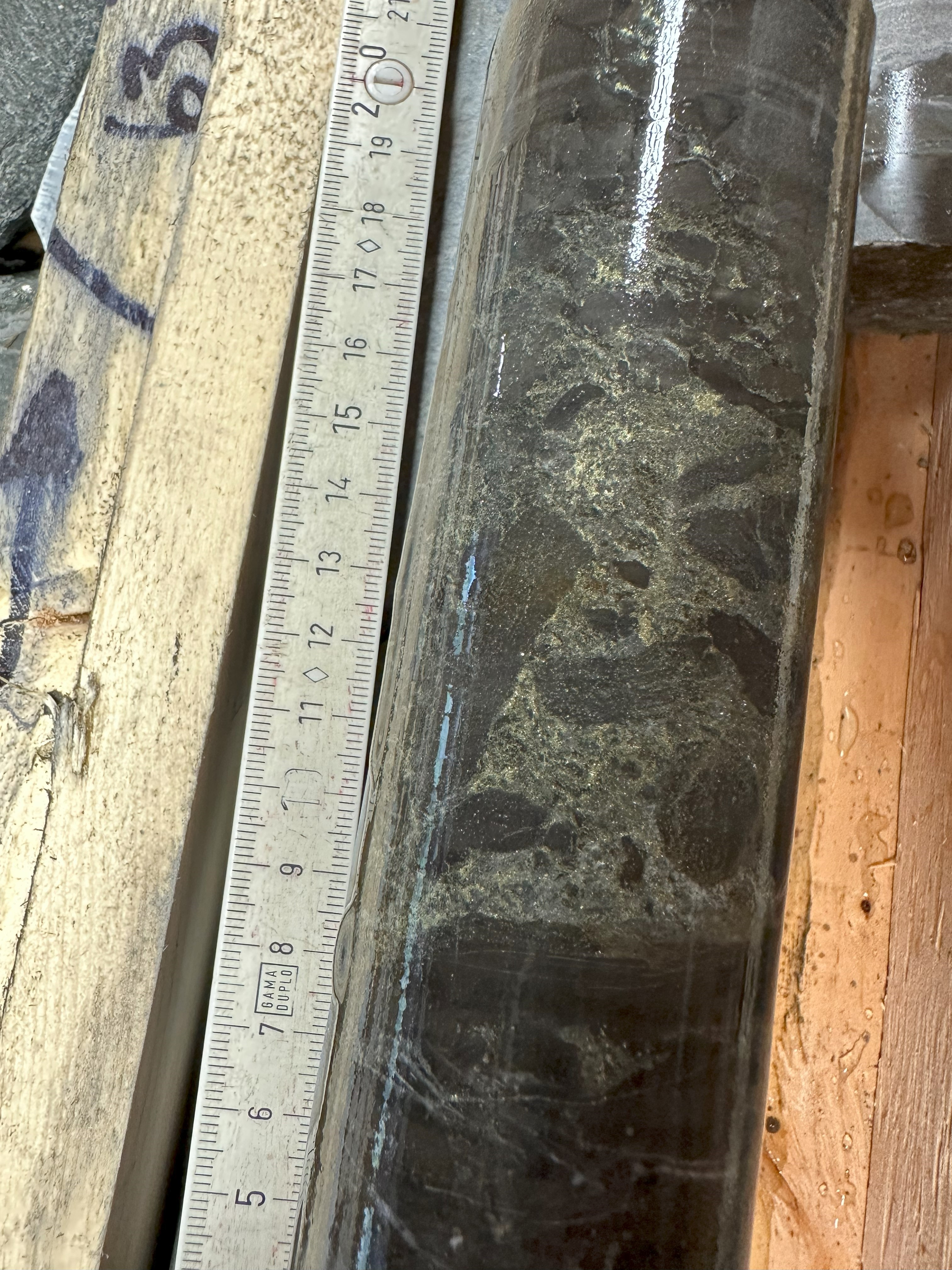
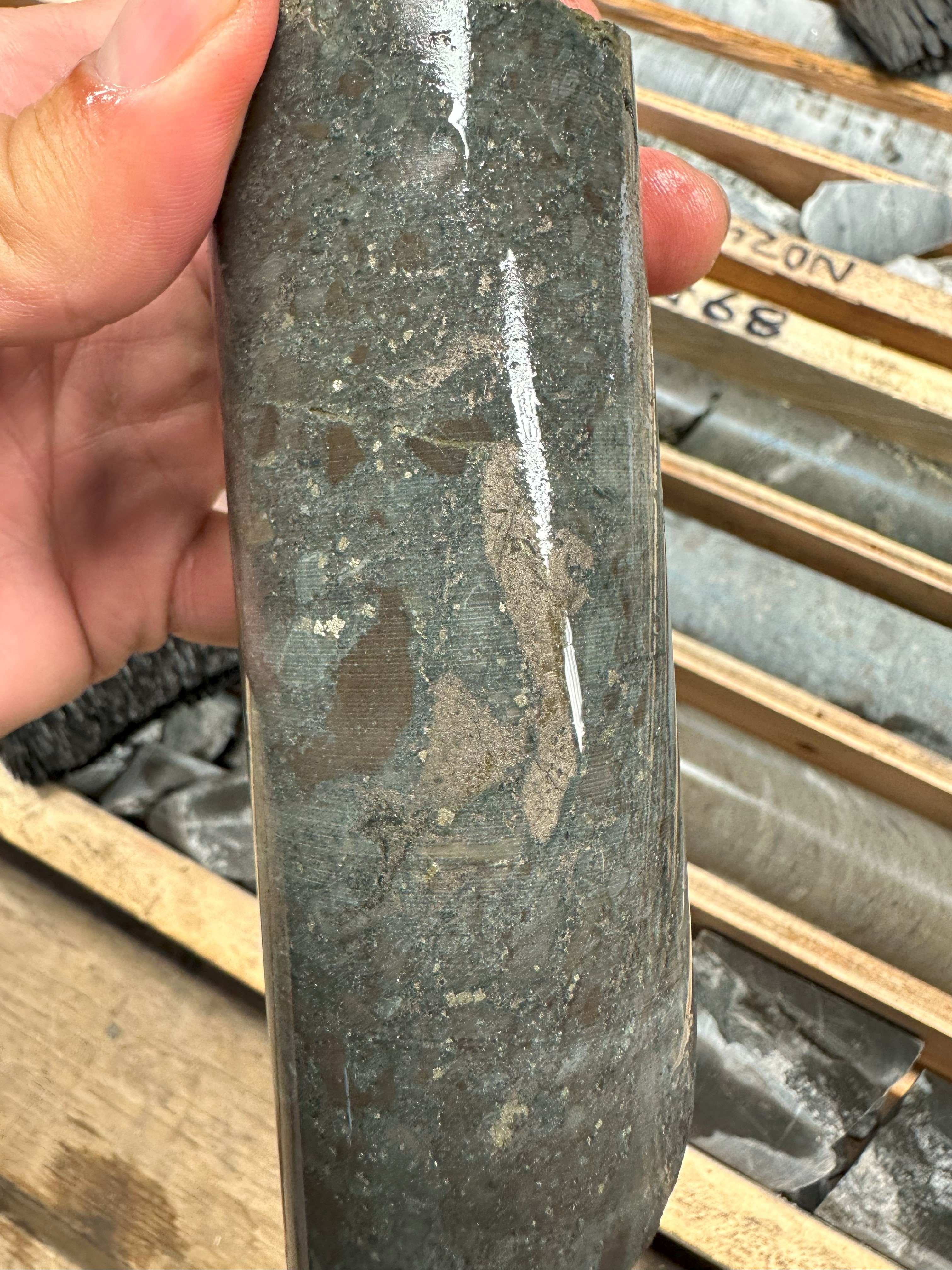
Zinc in Outcrop
Drilling and additional mapping confirms that zinc mineralization discovered in outcrop late last year (photo D), occurs as large blocks of sedimentary rock, about 10 metres in size, that are part of a chaotic breccia. The chaotic breccia most likely formed along a fault scarp when the seafloor was breaking apart along faults and forming sub-basins. The large blocks of sediments, some containing mineralization, presumably broke along these escarpments and collapsed into the developing extensional basins in the seafloor.
The large blocks of sediment with zinc mineralization occur about halfway up the mountain slope. The source of the blocks is expected to be higher in the stratigraphy and, hence, at higher elevations on the mountain. Higher elevations were not drilled this year because of freezing water line potential and for worker safety during freeze up when clouds and weather can limit helicopter support. The chaotic breccia with zinc mineralization in large blocks of sediments is additional support of a Sedex deposit type environment. A similar chaotic breccia occurs proximal to the Sullivan deposit.
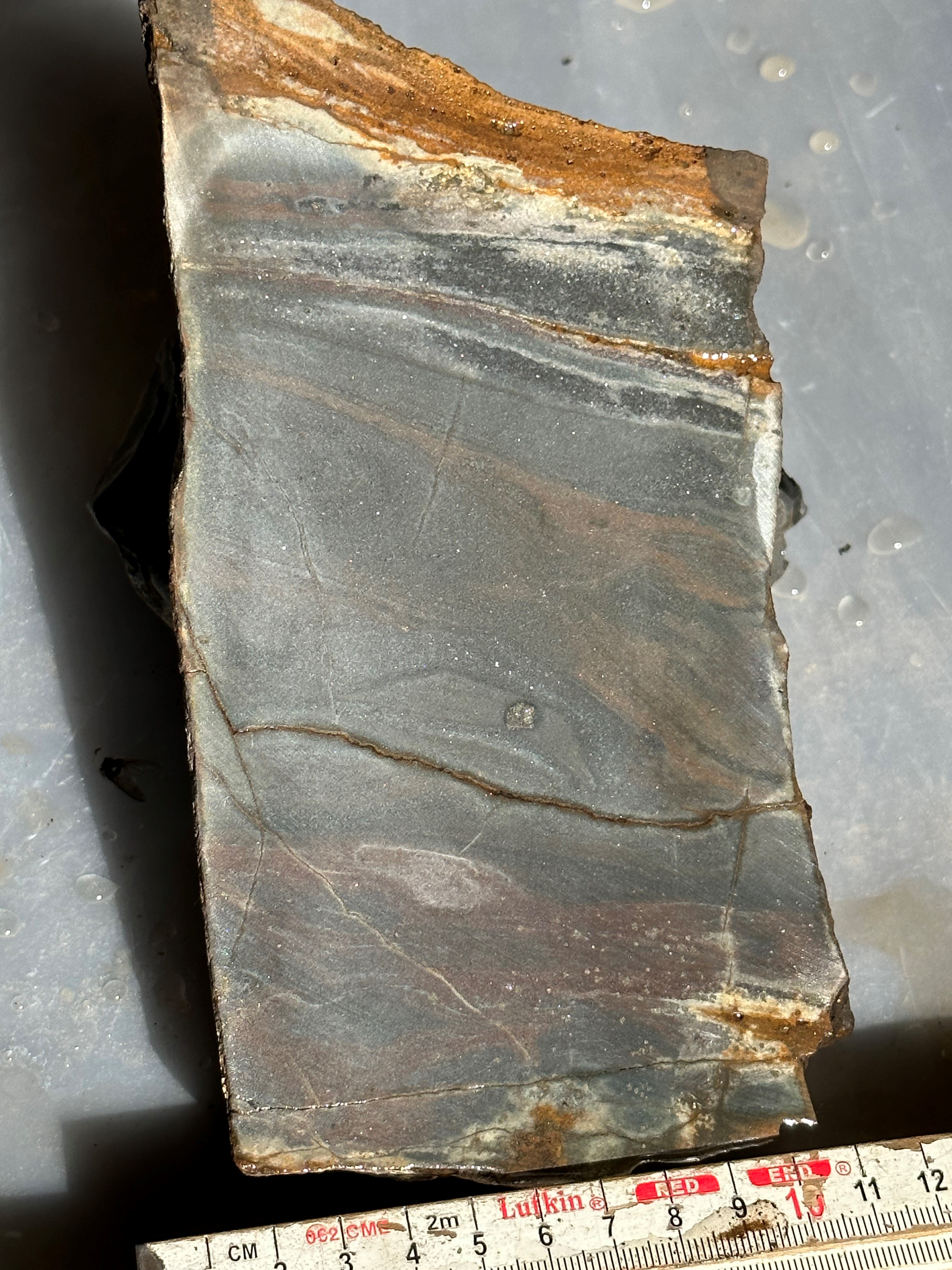
Boulders in Talus with Sullivan Style and Grade of Mineralization
Boulders with Sedex mineralization similar in style and grade to the Sullivan deposit were discovered late last year in talus at the base of the mountain slope and announced in a PJX news release October 12, 2023 (see photo E). The Sedex style of massive sulphide mineralization intersected by drilling is more iron sulphide dominant than the semi-massive to massive zinc-lead-silver and critical metal-rich sulphide boulders at the base of the mountain slope. The source of the boulders may be from higher on the mountain slope than was tested by drilling; possibly from the Kootenay King stratigraphic horizon that occurs higher on the mountain. Alternatively, the source of the boulders may be to the south of their current location. This would be higher in the cirque and possibly on strike with the 2 mineralized horizons encountered beneath the historical Estella Mine mentioned above.
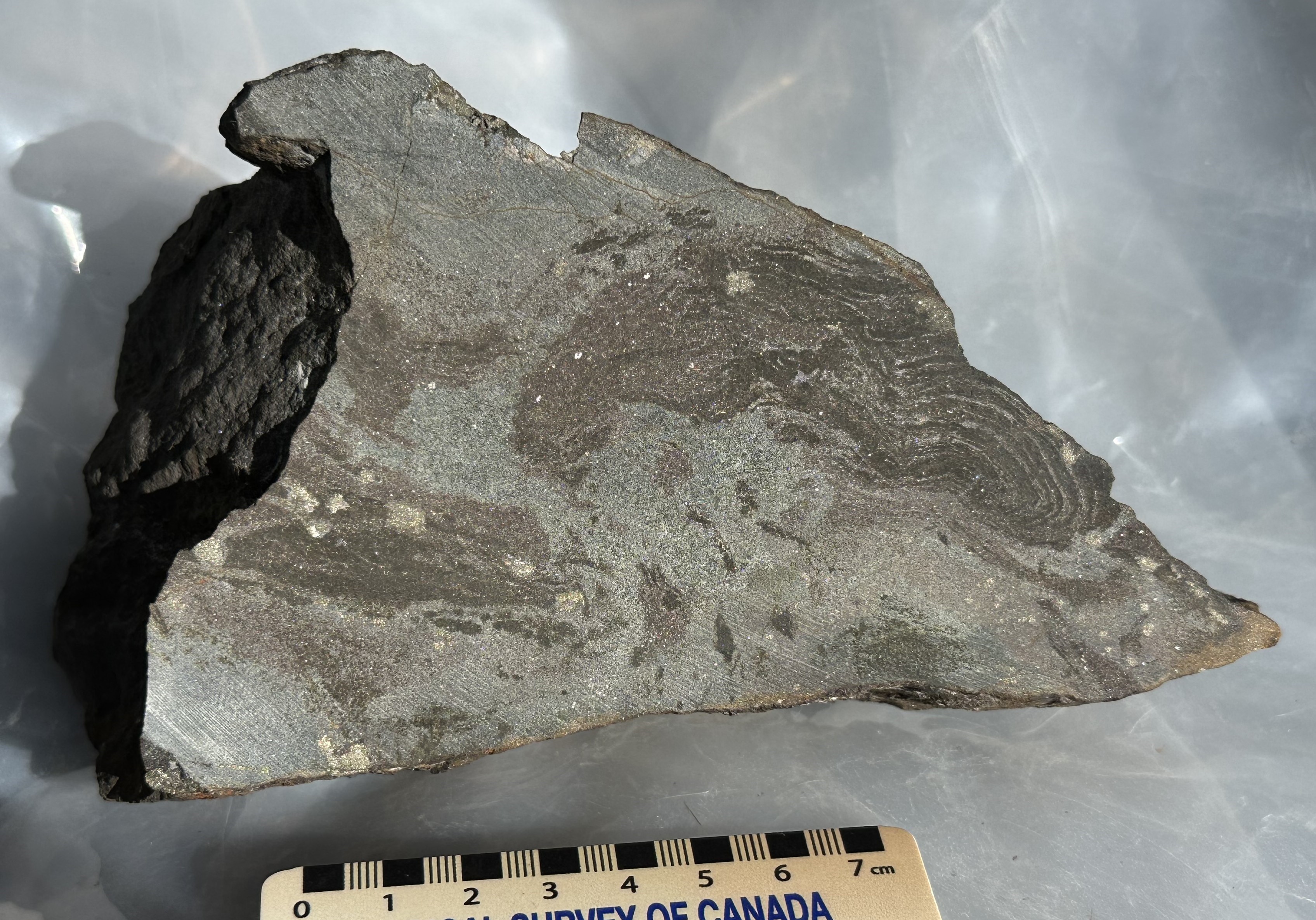
John Keating, President of PJX, commented, "Drilling confirms that we are in a geological environment favourable to host a Sedex type deposit, possibly similar to the historical Sullivan Sedex deposit located 20 km to the west, or to the historical Kootenay King Sedex deposit located 4.5 km along strike to the south. While Sullivan style and grade mineralization discovered in boulders at the base of the mountain slope last year were not encountered, their presence along with the large mineralizing system encountered by preliminary drilling supports the potential to discover a deposit in the vicinity. At present we believe the source of the boulders may be higher on the mountain and/or higher in the cirque. We will be in a better position to vector to a source when all the sample analyses are received and data compiled. PJX has an exploration permit in place that is good for 5 years."
PJX's New Discovery Potential Background
PJX owns
The geological disclosure and content of this news release has been reviewed and approved by Dave Pighin, P.Geo., and John Keating P.Geo. (qualified persons for the purpose of National Instrument 43-101 Standards of Disclosure for Mineral Projects). Mr. Pighin is one of a number of consulting geologists for PJX on the Dewdney Trail Property. Mr. Keating is the President, Chief Executive Officer and a Director of PJX.
About PJX Resources Inc.
PJX is a mineral exploration company focused on building shareholder value and community opportunity through the exploration and development of mineral resources with a focus on gold, silver, zinc, lead, copper, cobalt, and other critical metals. PJX's properties are located in the historical Sullivan Mine District and Vulcan Gold Belt near Cranbrook and Kimberley, British Columbia.
Please refer to our web site http://www.pjxresources.com for additional information.
FOR ADDITIONAL INFORMATION PLEASE CONTACT:
Linda Brennan, Chief Financial Officer
(416) 799-9205
info@pjxresources.com
Cautionary Note Regarding Forward-Looking Information
The information in this news release has been prepared as at the date noted above. Certain statements in this news release, referred to herein as "forward-looking statements", constitute "forward-looking statements" under the provisions of Canadian provincial securities laws. These statements can be identified by the use of words such as "expected", "may", "will" or similar terms.
Forward-looking statements are necessarily based upon a number of factors and assumptions that, while considered reasonable by PJX Resources Inc. as of the date of such statements, are inherently subject to significant business, economic and competitive uncertainties and contingencies. Many factors, known and unknown, could cause actual results to be materially different from those expressed or implied by such forward-looking statements. Readers are cautioned not to place undue reliance on these forward-looking statements, which speak only as of the date made. Except as otherwise required by law, PJX Resources Inc. expressly disclaims any obligation or undertaking to release publicly any updates or revisions to any such statements to reflect any change in PJX Resources Inc.'s expectations or any change in events, conditions or circumstances on which any such statement is based.
Cautionary Note to US Investors:
This news release may contain information about adjacent properties on which PJX Resources Inc. has no right to explore or mine. We advise U.S. investors that the SEC's mining guidelines strictly prohibit information of this type in documents filed with the SEC. U.S. investors are cautioned that mineral deposits on adjacent properties are not indicative of mineral deposits on our properties. This news release may contain forward-looking statements including but not limited to comments regarding the timing and content of upcoming work programs, geological interpretations, receipt of property titles, potential mineral recovery processes, etc. Forward-looking statements address future events and conditions and therefore involve inherent risks and uncertainties. Actual results may differ materially from those currently anticipated in such statements.
Neither the TSX Venture Exchange nor its Regulation Services Provider (as that term is defined in the policies of the TSX Venture Exchange) accepts responsibility for the adequacy or accuracy of this release.
SOURCE: PJX Resources Inc.
View the original press release on accesswire.com







